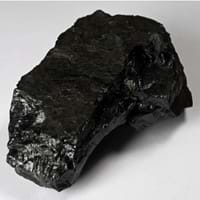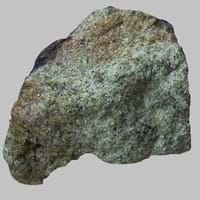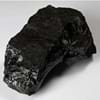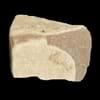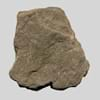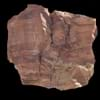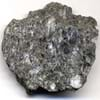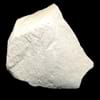Definition
Coal is a combustible black or brownish-black sedimentary rock usually occurring in rock strata in layers called coal beds
Lherzolite is a type of ultramafic igneous rock which contains essential olivine and clinopyroxene and orthopyroxene in equal proportions
Discoverer
John Peter Salley
Unknown
Etymology
From the Old English term col, which has meant mineral of fossilized carbon since the 13th century
From the Lherz Massif, an alpine peridotite complex, at Étang de Lers, near Massat in the French Pyrenees; Lherz is the archaic spelling of this location
Class
Sedimentary Rocks
Igneous Rocks
Sub-Class
Durable Rock, Soft Rock
Durable Rock, Hard Rock
Group
Not Applicable
Plutonic
Other Categories
Coarse Grained Rock, Fine Grained Rock, Medium Grained Rock, Opaque Rock
Fine Grained Rock, Opaque Rock
Texture
Amorphous, Glassy
Grenue
Color
Black, Brown, Dark Brown, Grey, Light to Dark Grey
Black, Dark Greenish - Grey, Green, Pink, Purple
Durability
Durable
Durable
Appearance
Veined or Pebbled
Glassy, Vesicular and Foilated
Interior Uses
Not Yet Used
Decorative Aggregates, Entryways, Homes, Interior Decoration
Exterior Uses
Not Yet Used
As Building Stone, As Facing Stone, Office Buildings
Other Architectural Uses
Not Yet Used
Curbing
Construction Industry
Cement Manufacture, for Road Aggregate, Making natural cement, Steel Production
Landscaping, Manufacture of Magnesium and Dolomite Refractories, Used for flooring, stair treads, borders and window sills.
Medical Industry
Not Yet Used
Not Yet Used
Antiquity Uses
Artifacts
Artifacts, Sculpture
Commercial Uses
Alumina Refineries, Electricity Generation, Liquid Fuel, Manufacture of Soap, Solvents, Dyes, Plastics and Fibres, Paper Industry
As armour rock for sea walls, Source of Magnesia (MgO), Used in aquariums
Types
Peat, Lignite, Sub-Bituminous Coal, Bituminous Coal, Anthracite, Graphite
Garnet Lherzolite
Features
Helps in production of Heat and Electricity, Used as fossil fuel
Host Rock for Lead
Archaeological Significance
Monuments
Not Yet Used
Not Yet Used
Famous Monuments
Not Applicable
Not Applicable
Sculpture
Not Yet Used
Used
Famous Sculptures
Not Applicable
Data Not Available
Pictographs
Not Used
Not Used
Petroglyphs
Not Used
Not Used
Figurines
Not Yet Used
Used
Formation
Coal forms from the accumulation of plant debris in a swamp environment which is buried by sediments such as mud or sand and then compacted to form coal.
Lherzolite is a fine-grained, hard rock which is a type of metasomatite, essentially altered basalt. It forms with or without crystallization, either below the surface as intrusive rocks or on the surface as extrusive rocks.
Mineral Content
Analcime, Apatite, Barite, Calcite, Chalcopyrite, Chlorite, Chromite, Clausthalite, Clay Minerals, Crandallite Group, Dolomite, Feldspar, Galena, Gypsum, Marcasite, Muscovite or Illite, Pyrite, Quartz, Siderite, Sphalerite, Zircon
Harzburgite, Olivine, Pyroxene, Pyrrhotite
Compound Content
Carbon, Hydrogen, Nitrogen, Oxygen, Sulphur
CaO, Cr, Chromium(III) Oxide, MgO
Types of Metamorphism
Burial Metamorphism, Cataclastic Metamorphism, Regional Metamorphism
Cataclastic Metamorphism, Contact Metamorphism
Types of Weathering
Not Applicable
Biological Weathering, Chemical Weathering, Mechanical Weathering
Types of Erosion
Not Applicable
Chemical Erosion, Water Erosion, Wind Erosion
Grain Size
Medium to Fine Coarse Grained
Fine Grained
Fracture
Conchoidal
Conchoidal
Porosity
Less Porous
Less Porous
Luster
Dull to Vitreous to Submetallic
Subvitreous to Dull
Compressive Strength
Not Available
Cleavage
Non-Existent
Perfect
Toughness
Not Available
2.7
Specific Gravity
1.1-1.4
2.86
Transparency
Opaque
Opaque
Density
1100-1400 g/cm3
2.8-2.9 g/cm3
Resistance
Heat Resistant
Heat Resistant, Impact Resistant, Pressure Resistant, Wear Resistant
Deposits in Eastern Continents
Asia
Bangladesh, Burma, Cambodia, China, India, Indonesia, Kazakhstan, Malaysia, Mongolia, Pakistan, Turkey, Vietnam
Russia, South Korea
Africa
Botswana, Kenya, Morocco, Mozambique, South Africa, Tanzania
Western Africa
Europe
Belgium, Bulgaria, England, France, Germany, Greece, Hungary, Kosovo, Netherlands, Norway, Poland, Romania, Serbia, Slovakia, Slovenia, The Czech Republic, Ukraine, United Kingdom
United Kingdom
Others
Not Yet Found
Not Yet Found
Deposits in Western Continents
North America
Canada, Mexico, USA
USA
South America
Brazil, Chile, Colombia, Venezuela
Not Yet Found
Deposits in Oceania Continent
Australia
New South Wales, Queensland, Victoria
Central Australia, Western Australia
All about Coal and Lherzolite Properties
Know all about Coal and Lherzolite properties here. All properties of rocks are important as they define the type of rock and its application. Coal belongs to Sedimentary Rocks while Lherzolite belongs to Igneous Rocks.Texture of Coal is Amorphous, Glassy whereas that of Lherzolite is Grenue. Coal appears Veined or Pebbled and Lherzolite appears Glassy, Vesicular and Foilated. The luster of Coal is dull to vitreous to submetallic while that of Lherzolite is subvitreous to dull. Coal is available in black, brown, dark brown, grey, light to dark grey colors whereas Lherzolite is available in black, dark greenish - grey, green, pink, purple colors. The commercial uses of Coal are alumina refineries, electricity generation, liquid fuel, manufacture of soap, solvents, dyes, plastics and fibres, paper industry and that of Lherzolite are as armour rock for sea walls, source of magnesia (mgo), used in aquariums.
